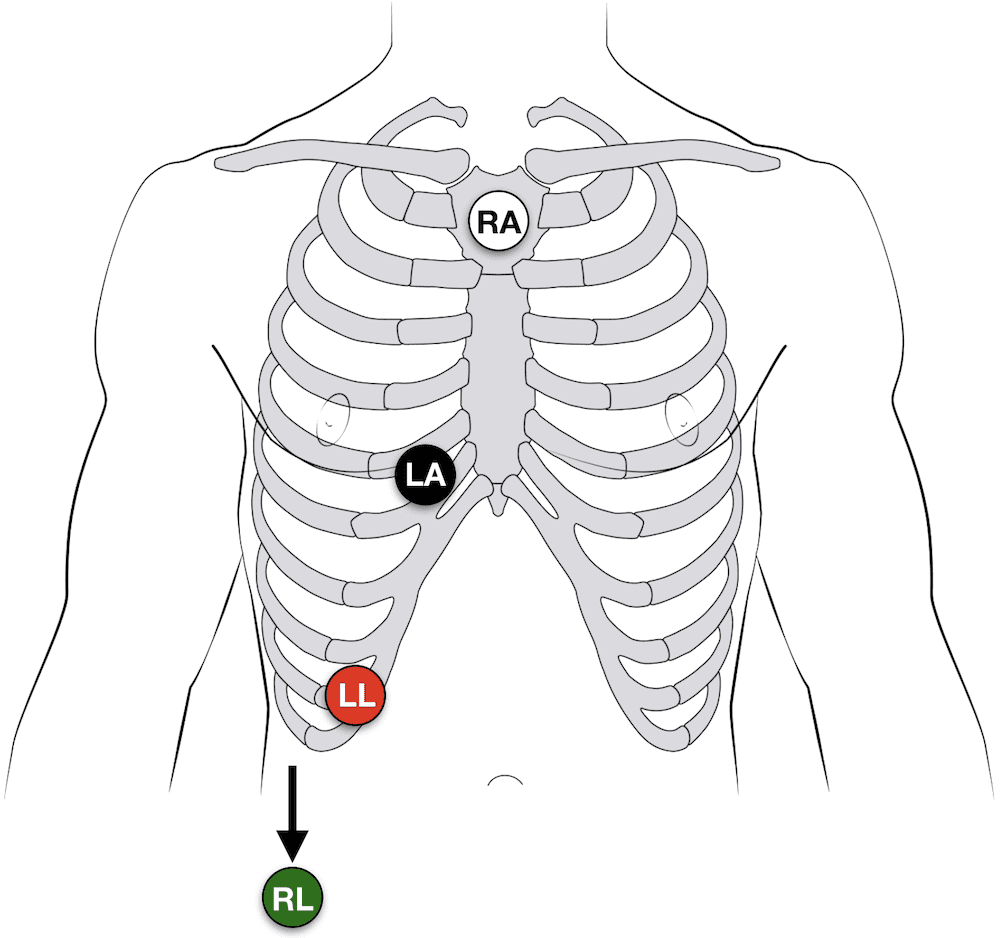ECG Case 018
75-year old patient presents with palpitations

Describe and interpret this ECG
ECG REVIEW
Rate:
- 150
Rhythm:
- Regular without p waves
Axis:
- LAD (-39 deg)
Intervals:
- PR – No visible p waves
- QRS – Normal (100-120ms)
- QT – 280ms (QTc Bazett 440ms)
Segments:
- Possible ST depression V3-6
Additional:
- Flutter waves visible in V1
- T Wave Inversion V1-2, aVL
- LVH (aVL>11mm)
INTERPRETATION
- Narrow Complex Tachycardia
- Ventricular rate 150bpm
Other differentials include AVNRT / AVRT however the rate is usually higher in these.
‘Mapping’ of flutter waves may be helpful, this may be easier if paper speed is altered e.g. 50mm/sec
Trial of vagal maneuvers of adenosine may help differentiate Atrial Flutter
This patient received adenosine, rhythm strip below, revealing obvious flutter waves. In comparison to ECG Quiz 017, this patient does not cardiovert to sinus rhythm following an adenosine bolus. Instead, the degree of AV block is transiently increased, revealed underlying flutter waves and confirming the diagnosis of atrial flutter with a 2:1 block.

Would the Lewis Lead have helped?
The Lewis lead configuration can help to detect atrial activity and its relationship to ventricular activity. Useful in:
- Observing flutter waves in atrial flutter
- Detecting P waves in wide complex tachyarrhythmia to identify atrioventricular dissociation
Lewis lead placement
- Right Arm (RA)electrode on manubrium
- Left Arm (LA) electrode over 5th ICS, right sternal border.
- Left Leg (LL) electrode over right lower costal margin.
- Monitor Lead I

FURTHER READING
- ECG Library – Atrial flutter
- ECG Library – Left Ventricular Hypertrophy
- Dr Smith – What’s the rhythm?
- Emcrit – The Lewis Lead
- Bakker ALM. The Lewis Lead: Making Recognition of P Waves Easy During Wide QRS Complex Tachycardia. Circulation 2009
- Wiesbauer F, Kühn P. ECG Mastery: Yellow Belt online course. Understand ECG basics. Medmastery
- Wiesbauer F, Kühn P. ECG Mastery: Blue Belt online course: Become an ECG expert. Medmastery
- Kühn P, Houghton A. ECG Mastery: Black Belt Workshop. Advanced ECG interpretation. Medmastery
- Rawshani A. Clinical ECG Interpretation ECG Waves
- Smith SW. Dr Smith’s ECG blog.
- Wiesbauer F. Little Black Book of ECG Secrets. Medmastery PDF
TOP 100 ECG Series
Emergency Medicine Specialist MBChB FRCEM FACEM. Medical Education, Cardiology and Web Based Resources | @jjlarkin78 | LinkedIn |

Hi Ed and Mike. Is this not atrial flutter 6:1 or 7:1 block rather than 2:1 block as said in answer above.
I think this only appears to be 6:1 or 7:1 because of the adenosine bolus leads to a transient increase in the AV block. In the original ECG V1 has a 2:1 atrial flutter pattern.